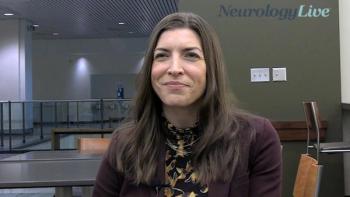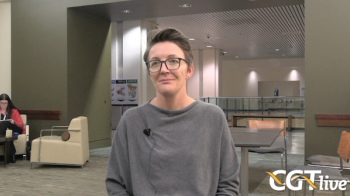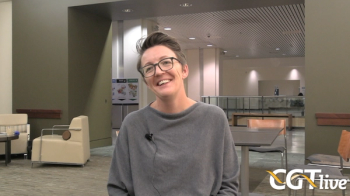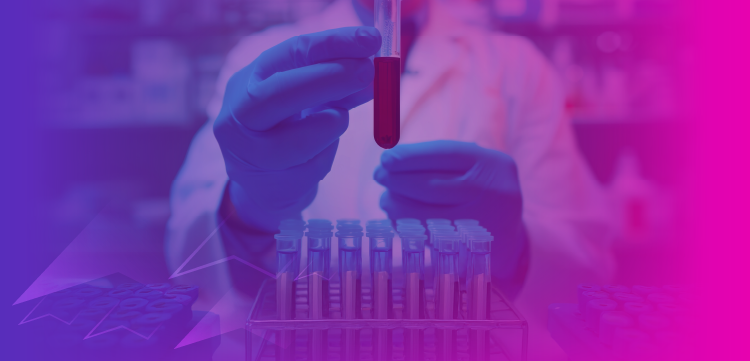
Bernie Owusu-Yaw, PhD, on Focused Ultrasound-Mediated Delivery for AAV Gene Therapy
The postdoctoral research fellow at Brigham and Women's Hospital discussed research on focused ultrasound aimed at enhancing AAV delivery across the blood-brain barrier.
One of the challenges of treating neurodegenerative diseases with adeno-associated virus (AAV) vector-based gene therapy is crossing the blood-brain barrier. Among the ways of potentially addressing this challenge currently under research is the use of focused ultrasound.
Notably, at
CGTLive: Can you give some background context about your presentation at ASGCT this year?
Bernie Owusu-Yaw, PhD: I work on focused ultrasound, which is a noninvasive way of disrupting the blood-brain barrier to enable the delivery of different therapeutics. I work with AAV, so my presentation was about working on optimizing the parameters for focused ultrasound to improve the delivery of AAVs for the treatment of neurodegenerative diseases.
Can you give an overview of the key results?
The efficacy of focused ultrasound-mediated delivery depends on different factors: the AAV serotype, the promoter, the dose, the region that you're targeting, and the ultrasound parameters. We decided to modify the ultrasound parameters to see if we could improve AAV9 transduction but also find the best set of parameters where we get high transduction efficiency within our targeted read in the striatum and also minimize tissue damage. That was the goal of this project.
We looked at different pressures. We tested 3 different pressures, and we tested 3 different microbubble doses to see if we could improve transduction efficiency any further. What we were able to see is that we were able to achieve successful blood-brain barrier opening for all the pressures and microbubble doses that we tested. We saw a significant increase in blood-brain barrier permeability in the high-pressure group compared with the medium-pressure group and in the high-pressure group compared with the low-pressure group. We were happy with that.
Then we went on to assess tissue damage, and we actually did not see any signs of tissue damage across any of the pressure doses. We had a high-, medium-, and a low-pressure group, and we tested 3 microbubble doses: 20, 40, and 80 μL/kg. There were no signs of tissue damage.
Then we went on to assess neuronal transduction efficiency. We treated the right striatum for delivery, and we used the left side as a control, and we saw a significant increase in neuronal transduction in the right-treated striatum compared with the untreated side. This was true across the 3 pressures and the 3 microbubble doses we tested. However, we did not observe any significant differences between the pressure doses or the microbubble doses. With this, we were able to see that although we are significantly increasing transduction efficiency on the treated side compared with the untreated side, within changing the pressure and changing the dose, we're not really maximizing efficiency any further. We saw a range of 2% to 10% of neurons being transduced. So we then decided to change the AAV serotype in collaboration with Fengfeng Bei, PhD, using novel capsids—AAV cell-penetrating peptide (CPP) capsids that were generated by incorporating CPPs into the receptor-binding region of AAV9. We tested the delivery of 2 novel capsids, AAV.CPP.16 and AAV.CPP.21, and we compared it with AAV9 and AAV-PHP.B in BALB/c mice, and with the novel capsids, using focused ultrasound-mediated delivery, we saw a significant increase in neuronal transduction efficiency in the treated cortex—over 60% transduction in the cortex with the 2 novel capsids and over 40% neuronal transduction in the treated striatum. We're really happy with these results moving forward.
Moving forward, using these optimized parameters and these novel AAV CPP capsids, our research program is really interested in Huntington disease, so we're going to use these capsids to deliver therapeutic agents targeting MSH3 to see if knocking down the MSH3 can reduce the CAG repeat expansion using this method. Those are our steps moving forward.
How would you summarize the big picture implications that you would want physicians and the broader health care community to take away from this?
Focused ultrasound is a rapidly emerging technology, and so far, we've had safe and repeatable blood-brain barrier opening demonstrated in patients with Alzheimer disease, Parkinson disease, amyotrophic lateral sclerosis, and glioblastoma tumors. For our next steps, we're really looking forward to having clinical trials where we open the blood-brain barrier and we deliver AAV. That would be the next leap to get AAVs in patients using focused ultrasound.
Are there any areas of interest that have been identified for further research?
I think even though we increased different parameters and we weren't seeing substantial increases, I think it just shows that the delivery following focused ultrasound, using AAVs, is dependent on many different factors. I think more research needs to be done to tease out the different factors and see how much they contribute so we know how to modify the different factors to get the best outcome while minimizing damage in patients, which I think is an important step as we think about transitioning to the clinic.
This transcript has been edited for clarity.
REFERENCE
Owusu-Yaw B. Optimizing focused ultrasound parameters for enhanced AAV delivery across the blood-brain barrier for the treatment of neurodegenerative diseases. Abstract presented at: American Society of Gene & Cell Therapy 28th Annual Meeting; May 13-17, 2025; New Orleans, LA. Abstract 48.
Newsletter
Stay at the forefront of cutting-edge science with CGT—your direct line to expert insights, breakthrough data, and real-time coverage of the latest advancements in cell and gene therapy.










































